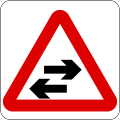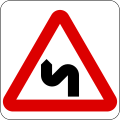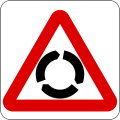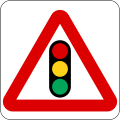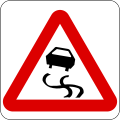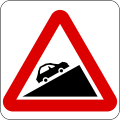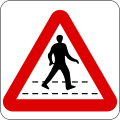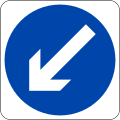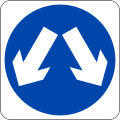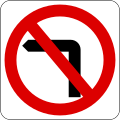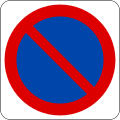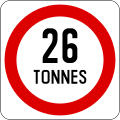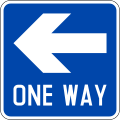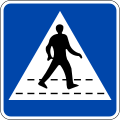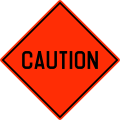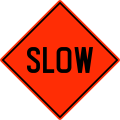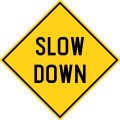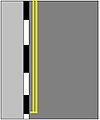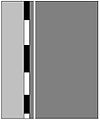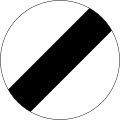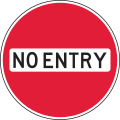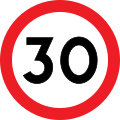
Road signs in the United Kingdom and in its associated Crown dependencies and overseas territories conform broadly to European design norms, though a number of signs are unique: direction signs omit European route numbers, and road signs generally use the imperial system of units, unlike the rest of Europe. Signs in Wales and parts of Scotland are bilingual.

Road signs in Sweden are regulated in Vägmärkesförordningen, VMF (2007:90), and are to be placed 2 metres from the road with the sign 1.6 m from the base for motorized roads. Except for route numbers, there are a maximum of three signs on a pole, with the most important sign at the top. All signs have a reflective layer added on selected parts of the sign as is custom in European countries; most larger signs also have their own illumination.

Road signs in Iceland are visual communication devices placed along roads and highways throughout the country to provide information, warnings, and guidance to motorists and pedestrians. Iceland never ratified the Vienna Convention on Road Signs and Signals, but road signs in Iceland conform to the general pattern of those used in most other European countries, with certain design elements borrowed from Danish and Swedish practice. Signs tend to be more sparsely employed than in other European countries, especially in rural areas.

Road signs in Italy conform to the general pattern of those used in most other European countries, with the notable exception that the background of motorway (autostrada) signs is green and those for 'normal' roads is blue. They are regulated by the Codice della Strada and by the Regolamento di Attuazione del Codice della Strada in conformity with the 1968 Vienna Convention on Road Signs and Signals.

Road signs in Thailand are standardized road signs similar to those used in other nations but much of it resembles road signage systems used in South American countries with certain differences, such as using a blue circle instead of a red-bordered white circle to indicate mandatory actions. Until the early 1980s, Thailand closely followed American, European, Australian, and Japanese practices in road sign design, with diamond-shaped warning signs and circular restrictive signs to regulate traffic. The Department of Railway maintains a standard on the typeface used in the sign, with custom made type for Thai text, unofficially named “Thang Luang”(อักษรทางหลวง) and a small derivation of FHWA Series fonts typeface, which is used on American road signage, for Latin text. In most Bangkok Metropolitan Area's routes, TS Lopburi is still used.

In the United States, road signs are, for the most part, standardized by federal regulations, most notably in the Manual on Uniform Traffic Control Devices (MUTCD) and its companion volume the Standard Highway Signs (SHS).
Road signs in Iran are regulated in the INSO 14815-1 standard. They generally follow the Vienna Convention on Road Signs and Signals.

Road signs in South Korea are regulated by the Korean Road Traffic Authority.
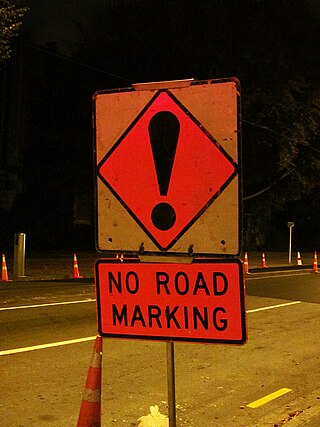
Road signs in New Zealand are similar to those set by the Vienna Convention on Road Signs and Signals. While New Zealand is not a signatory to the convention, its road signs are generally close in shape and function. New Zealand uses yellow diamond-shaped signs for warnings in common with Australia, the Americas, Ireland, Japan and Thailand. Speed limit signs are a red circle with a white background and the limitation in black, and are in kilometres per hour. There are also some signs unique to New Zealand. Road signs in New Zealand are controlled by NZ Transport Agency Waka Kotahi and are prescribed in the Land Transport Rule: Traffic Control Devices 2004 and set out in the Traffic Control Devices (TCD) Manual.
Road signs in Ukraine are governed by a combination of standards set out by the Vienna Convention on Road Signs and Signals, the European Union (EU), and Ukraine Transport and Roads Agency. Ukrainian signs are similar to the signs of other post-Soviet states and are set out in 7 separate categories based on meaning: warning, priority, prohibitory, mandatory, information, service, and additional plates.

Road signs in Hong Kong are standardised by the Transport Department. Due to being a former British territory, the road signage in Hong Kong is similar to road signs in the United Kingdom, with the addition of Traditional Chinese characters.
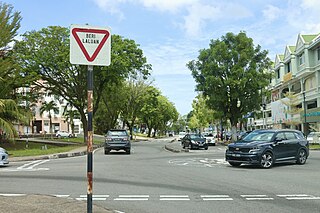
Road signs in Brunei closely follow the traffic sign regulations used in Singapore as well as the United Kingdom to a lesser extent. A number of changes have also been introduced over the years to suit local road conditions. There are also some differences in the typefaces used, although DIN 1451 remains widely used.
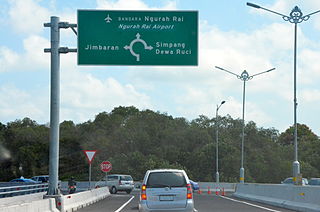
Road signs in Indonesia are standardized road signs similar to those used in other nations but with certain distinctions. As a former Dutch colony, until the 1970s road signs in Indonesia closely followed The Netherlands rules on road signs. Nowadays, Indonesian road sign design are a mix of European, US MUTCD, Australia, New Zealand and Japanese road sign features. According to the 2014 Minister of Transport's Regulation No. 13 concerning Traffic Signs, the official typeface for road signs in Indonesia is Clearview. Indonesia formerly used FHWA Series fonts as the designated typeface though the rules are not being implemented properly.

Road signs in Cambodia are standardized road signs are similar to those used in Europe but much of it resembles road signage systems used in South American countries with certain differences. The designs of road signage match their neighbours of Thailand and Malaysia, both of which adopt a modified version of the South American road signage system. Until the early 1980s, Cambodia closely followed American, European, Australian, and Japanese practices in road sign design, with diamond-shaped warning signs and circular restrictive signs to regulate traffic. Unlike Thailand and Malaysia, Cambodia does not use the FHWA Series fonts typeface, favouring Helvetica instead.

Road signs in France refer to all conventional signals installed on French roads and intended to ensure the safety of road users, either by informing them of the dangers and regulations relating to traffic as well as elements useful for decision-making, or by indicating to them the landmarks and equipment useful for their travel on the national territory. They generally largely follow the general European conventions concerning the use of shape and color to indicate their function. France is a signatory to the 1968 Vienna Convention on Road Signs and Signals. France signed the Vienna Convention on Road Signs and Signals on 8 November 1968 and ratified it on 9 December 1971.
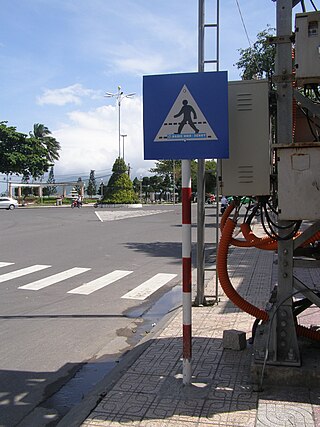
Road signs in Vietnam follow Chinese and French road signs. Some signs are written in both Vietnamese and English. The signs are prescribed by the Ministry of Transportation of Vietnam.

Road signs in Georgia are similar to the road sign system of other post-Soviet states that ensure that transport vehicles move safely and orderly, as well as to inform the participants of traffic built-in graphic icons. However, some road signs look a bit different from Soviet ones and closer to the European ones. These icons are governed by the Vienna Convention on Road Traffic and Vienna Convention on Road Signs and Signals.
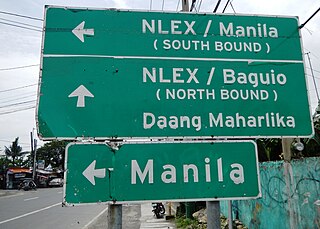
Road signs in the Philippines are regulated and standardized by the Department of Public Works and Highways (DPWH). Most of the signs reflect minor influences from American and Australian signs but keep a design closer to the Vienna Convention on Road Signs and Signals, to which the Philippines is an original signatory. The Philippines signed the convention on November 8, 1968, and ratified it on December 27, 1973.

The road signs, used on the Serbian road network, are regulated by the "Regulation of Traffic Signs", which was last time modified in 2017.
Road signs in Latvia conform to the general pattern of those used in most other European countries. They are regulated in Ceļu satiksmes noteikumi and the standards documents LVS 77–1:2016 "Ceļa zīmes. 1. daļa: Ceļa zīmes", LVS 77-2:2016 "Ceļa zīmes. 2. daļa: Uzstādīšanas noteikumi" and LVS 77-3:2016 "Ceļa zīmes. 3. daļa: Tehniskās prasības" in conformity with the 1968 Vienna Convention on Road Signs and Signals. Latvia acceded to the Vienna Convention on Road Signs and Signals on October 19, 1992.









